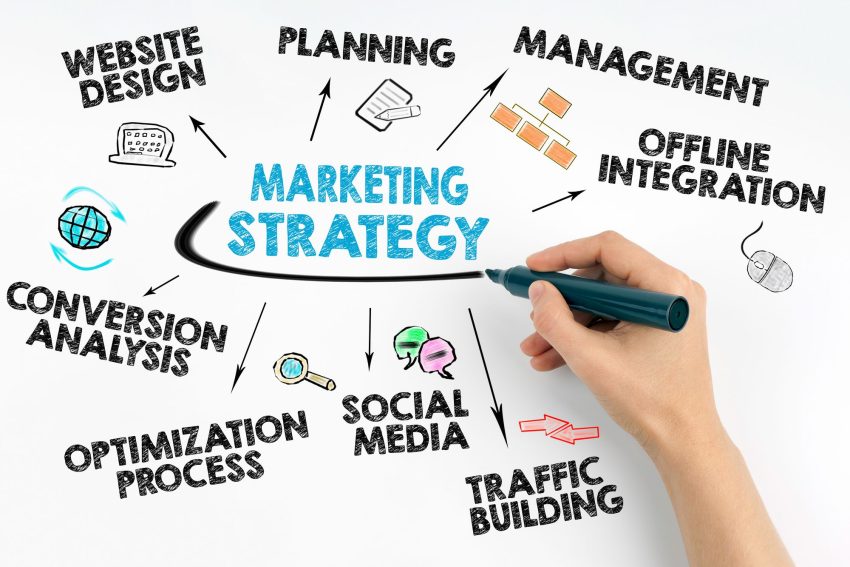What is marketing?
Market research and advertising are part of marketing, an art that involves promoting and selling goods and services. It considers the customer’s needs and satisfaction when evaluating business. This includes public relations, sales, and pricing. Marketing plans can be used to help achieve business goals that require lots of research and strategies.
What is Marketing Strategy?
A marketing strategy is an integrated plan that is designed to meet the marketing goals of a company, organization or individual. A marketing strategy is a comprehensive plan that details the tactics, channels and resources needed to engage and reach target audiences. This will ultimately drive sales, conversions and brand awareness. To optimize marketing effectiveness, a well-crafted strategy takes into account a variety of factors including customer preferences and needs, competition, market trends and budget constraints.
The 5 Ps of Marketing
1. Product:
A business’s core offering is its product or service. Understanding the unique selling propositions, features, benefits and other aspects of a product is crucial. It’s also important to understand how it meets the needs and desires of your target audience. Successful products in 2024 will be customer-centric, innovative and able to adapt to market changes.
2. Price:
The price is the amount of money that customers will pay for a service or product. Understanding the value proposition and analyzing the pricing of competitors is key to determining the best pricing strategy. Pricing strategies like dynamic pricing, value based pricing and promotional pricing are effective in today’s highly competitive market.
3. Place:
The place is the channel of distribution that is used to provide a product or service to a customer. This includes brick and mortar stores, online platforms, as well as other points of sales. Omnichannel strategies, which create seamless experiences for customers across physical and digital channels in 2024, will be crucial to maximizing reach.
4. Promotion:
Promotion is the use of various tools and communication methods to increase awareness and encourage customers to purchase a product. Advertising, public relations and social media marketing are some examples. Email marketing, influencer marketing, content marketing and email marketing may also be included. Marketers must use data-driven, personalized, and targeted promotional strategies in the digital age to engage their audience and convert them.
5. People:
Marketing success is often overlooked, but people are a critical element. Not only are they the target audience, but also internal stakeholders like employees, managers, and partners. Businesses must invest in 2024 to build a strong corporate culture, provide excellent customer service and foster authentic relationships with their audiences through social media and digital channels.
Marketing Strategies VS Marketing Plans VS Marketing Tactics:
To develop and implement an effective marketing strategy, it is important to know the differences between marketing plans, strategies, and tactics. Each term is a distinct level in the marketing process with its own functions and purposes.
Related: Digital Marketing: 8 Best Smart Steps for Business
Marketing strategy: The marketing strategy is an overarching, high-level plan that defines the long-term marketing goals and objectives of a company. The marketing strategy is a plan that outlines the company’s long-term goals and objectives. It also includes a thorough understanding of market trends, competitors, and target audiences. Marketing strategy is a comprehensive plan that focuses on the overall picture. It also provides direction to the marketing efforts of the organization.
Marketing plan: The marketing plan is an organized, detailed roadmap of the marketing activities and initiatives that are required to implement a marketing strategy. This document is comprehensive and includes budgets, timelines, audience segmentation, communication methods, and measurable goals (KPIs). A marketing plan is a document that translates a marketing strategy into measurable objectives. It ensures that the strategy will be executed effectively over a specified period.
Tactics for Marketing: The tactics used to implement the marketing plan are individual actions and techniques. Marketing tactics are the “how” to marketing. They outline the daily activities required to reach the goals set out in the plan. Marketing tactics can include a social media marketing campaign, launching a product, hosting webinars, or implementing content marketing strategies.
What is the best marketing strategy to choose?
The success of your company depends on choosing the best marketing strategy. This step-by-step marketing guide will help you select the best strategy for your business:
- Define Your Goals: Begin by clearly defining your marketing goals, such as generating leads, increasing sales or building customer loyalty. These goals will form the basis of your marketing strategy, and guide you in your decisions throughout the process.
- Know your audience: Do thorough research in order to understand your audience, their needs, preferences and behaviors. You can then tailor your marketing strategies to appeal to and resonate with your ideal customers.
- Analyze the competition: Examine your competitors’ marketing strategies and identify any gaps, opportunities or best practices in your industry. You can then develop a Automation Test Strategy to set you apart from your competitors and address the challenges and opportunities unique to your market.
- Assess resources and budget. Determine what resources and budget are available to you for marketing. Consider factors like time, expertise, financial investment, and personnel. Understanding your limitations can help you choose a feasible and cost-effective strategy for your business.
- Determine the best marketing channels for your business: Based upon your goals, your target audience and your resources, determine the marketing channels most likely to reach your audience and achieve your objectives. These channels can include digital marketing, conventional marketing, or a mixture of the two.
- Take into account the marketing mix. Assess how the five P’s (Product Price, Promotion Place and People) can impact your marketing strategy. Make sure that your marketing plan aligns with the product offerings, pricing strategies, distribution channels and customer service approaches.
- Create a strategy: Outline an elaborate marketing plan, including specific tactics, timelines and measurable goals, for each marketing channel. This plan must be flexible, adaptable and allow you to react to changes in the industry, your customers’ behavior or your marketing efforts.
- Monitor and implement your strategy. Take your marketing plan and put it into action. Key performance indicators (KPIs), which measure the success or failure of marketing campaigns, can be used to make data-driven decision to optimize strategy.
- Analyze results and refine: Continue to analyze and refine the results of marketing efforts. It may be necessary to adjust your marketing tactics, reallocate resources or review your goals and objectives. You will be able to stay competitive and agile in your field if you regularly refine your marketing strategy.
Following these steps will help you select a strategy that is aligned with your goals, your resources and your target audience. This will ensure the success of your efforts in marketing and the growth of the Small Business Content Marketing Strategy.
Marketing strategy examples:
Six marketing strategies from different industries, demonstrating various approaches and tactics.
Apple Product and Branding strategy:
Apple is known for its innovative products that are high-quality and have a minimalist design. Their marketing strategy focuses on the user experience, premium products, and brand loyalty. Apple’s ads are very visually appealing, and they focus on the unique features of its products. Apple’s exclusive retail stores, as well as their exceptional customer service, further enhance the brand image.
Nike Empowerment and Influencer marketing:
Nike’s marketing plan revolves around empowering and promoting athletes, as well as an active lifestyle. The company works with athletes and influencers who are well-known to promote their products. This allows them to tap into their fan base and enhance their credibility. Nike uses social media platforms, content marketing and other methods to connect with their audience. They also share inspirational stories.
Airbnb Experiences Platform:
Airbnb has expanded its offering beyond accommodations with Airbnb Experiences. This allows hosts to provide unique local experiences to tourists. Airbnb’s diversification strategy generates revenue and strengthens its brand as a platform that offers authentic, personalized experiences.
Which marketing strategies can a business pursue?
- Objectives: Make sure that your marketing strategies are aligned with the marketing objectives of your company and help you achieve your goals.
- Resource: Determine how many marketing strategies your company can effectively manage and execute based on the available resources such as personnel and expertise. Choose the best marketing strategy for your target audience by considering their preferences, needs, and behaviors.
- Industry: Analyze the dynamics and trends in your industry to determine the best marketing strategy for your business.
- Competitive landscape: Analyze the marketing efforts of your competitors and identify any gaps that you can use to differentiate your company.
- Scalability: Your business may grow and you will need to adopt new strategies and expand your marketing to achieve your goals.
Conclusion
To conclude, a marketing strategy that is effective and efficient will help any business thrive in the competitive market of today. In order to create a successful strategy, businesses must first set clear objectives, then analyze their competitors, and finally develop a unique value proposition. Businesses can engage their target audiences, achieve marketing goals and drive growth by selecting the best marketing channels, creating content plans, setting up budgets, and continually analyzing and improving their efforts.
Read more:

